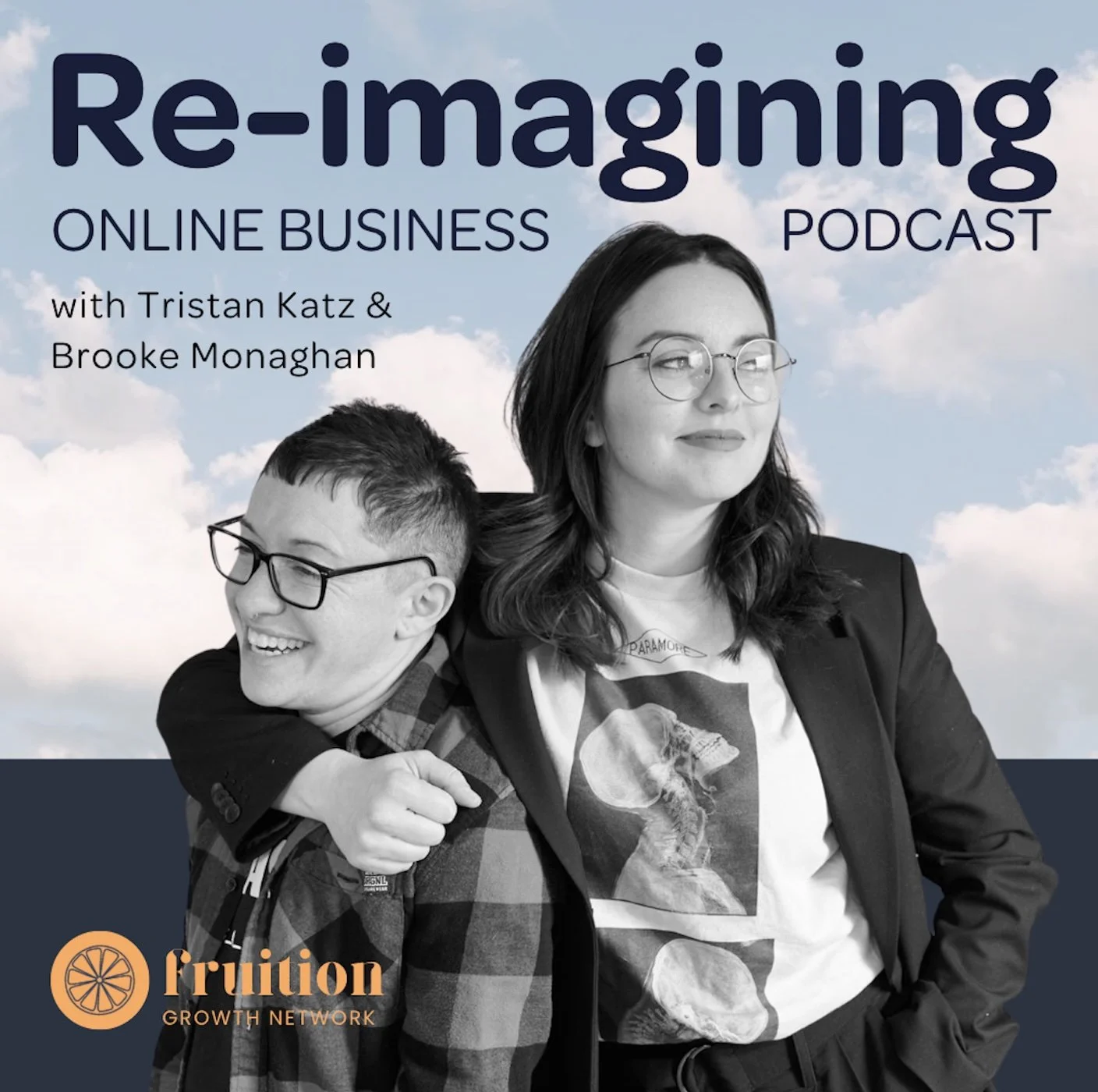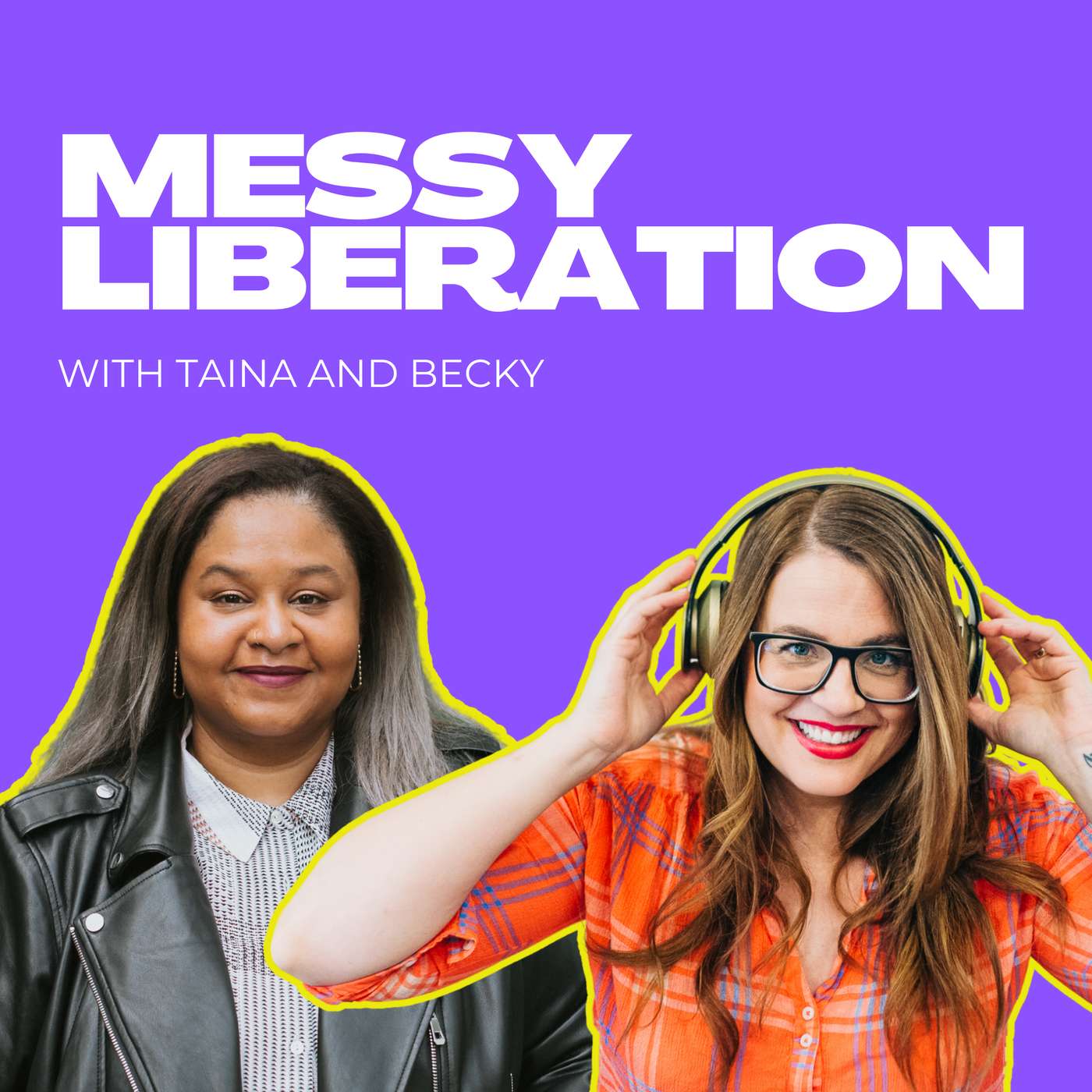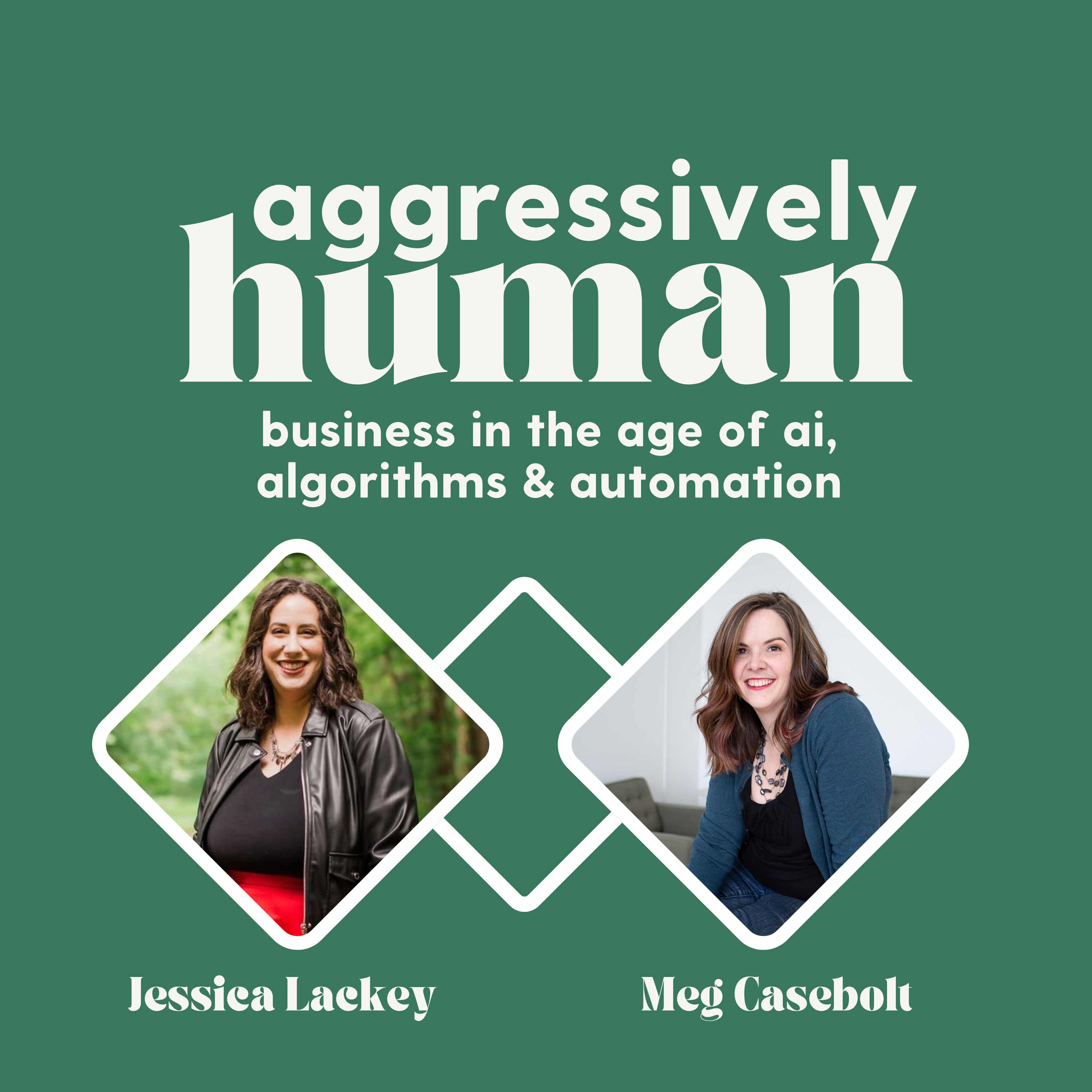.png)
Here's What I Learned: Ditching Biz-as-Usual for Values, Freedom, and Doing It Your Way
Welcome to Here's What I Learned, the podcast for progressive entrepreneurs ready to grow their businesses without sacrificing their values, creativity, or sanity. Hosted by me, Jacki Hayes—a systems strategist, unapologetic smutty romantasy fan, and D&D geek—this show is your go-to space for honest conversations about what it really takes to create a business and life you love.
Each week, we dive into relatable stories and actionable lessons from values-driven leaders who’ve figured out how to scale sustainably while staying true to themselves. Whether you’re managing growth, navigating overwhelm, or rethinking hustle culture, this podcast is here to show you that success doesn’t have to mean burnout.
If you value integrity, autonomy, and time freedom—and you’re looking for inspiration that’s as practical as it is empowering—you’ve found your people. Hit play, and let’s rewrite the rules together.
Here's What I Learned: Ditching Biz-as-Usual for Values, Freedom, and Doing It Your Way
Do You Need a New Tool, or Does Your Process Need Care?
If leads are slipping and proposals stall, it’s tempting to blame the platform. In this solo episode, I explain why most “tool problems” are really process gaps—and how I use my CARE framework (Clarity, Align, Reduce, Ease) to make the tools you already have work better. I walk you through defining “done,” reducing decision fatigue, setting cues you’ll actually notice, and when it does make sense to pilot new software—without derailing client work.
Topics
- How I gut-check whether it’s a tool gap or a process gap
- My CARE framework in plain language (Clarity, Align, Reduce, Ease)
- When I decide a new tool truly helps—and how I avoid platform churn
What next?
- Follow Here's What I Learned on your favorite podcast player
- Leave a review so the podcast is seen by more people like you
- Share this episode with a friend
- Find the complete show notes and transcripts at jackihayes.co
Say hi!
- Follow me on Instagram at @jackihayes_obm
Credits:
Intro and Outro Music: Atomic by Alex-Productions |https://onsound.eu/
Music promoted byhttps://www.free-stock-music.com
Creative Commons / Attribution 3.0 Unported License (CC BY 3.0)
Hey there, welcome to Here's What I Learned. I'm Jacki Hayes, a system strategist, unapologetic, smutty romantasy-lover, Dungeons & Dragons geek, and your no-BS guide to building a business that works for you. This is the place where we swap stories, share lessons, and get real about the highs and lows of creating a life and business that actually feels good.
No cookie-cutter advice here, just honest conversations about what's working, what's not, and how to rewrite the rules to fit your version of success. So grab your favorite beverage, get comfy, and let's dive in. I've been thinking about something I see all the time with creative service providers.
Picture this scenario. You're convinced you have a CRM problem. Leads are falling through cracks, proposals are sitting in limbo, and you're researching new platforms, pricing them out, ready to switch.
But what if the real issue isn't your CRM at all? What if there's no clear handoff between inquiry and proposal sent? No follow-up rhythm, no defined revision process. Same tools, completely different result, once you've sorted that out. We default to, I need a better tool, when the real question is, do you need a new tool, or does your process need care? If you're juggling proposals and client messages across multiple apps, if your tech costs keep creeping up, or if you're constantly switching between platforms trying to find the perfect solution, this conversation is going to be for you.
Because here's what I've learned. You don't need a system's brain to have a system that works. You just need to know what you're actually solving for.
Let me paint a picture of what I mean. Imagine you're a web designer, a potential client emails you on Tuesday, you respond Wednesday, they book Thursday, you send the contract Friday. But then what? Maybe you've got the contract in one place, the project kickoff call in your calendar, your sitemap and wireframe notes scattered across different apps, and you're invoicing in yet another system.
By the time you're ready to start building, you're scrambling to remember what pages they wanted and what functionality you promised them. Sound familiar? Now, you could absolutely solve this with a fancier tool. There are platforms that handle everything from first contact to final delivery.
But here's the thing. If you don't have clarity on what happens between booked and delivered, even the fanciest tool won't help. I've dug many clients out of this exact situation.
They kept switching project management platforms, convinced the next one would finally make them organize, Asana to Trello to Monday.com to Notion, same chaos, different interface. The breakthrough came when we stopped asking what tool do I need and started asking what actually needs to happen here. So let's do a little reality check together.
I'm going to walk you through some scenarios and just notice which ones make you go, oh, that's me. First, if I asked you to describe what triggers each phase of your client work and what signals it completes, would you hesitate? What exactly moves someone from inquiry to booked? When is onboarding actually done? Second, could you sketch your entire client flow on one page right now? Not the ideal version you wish you had, but what actually happens from first contact to final handoff? Third, are you paying for two tools that do basically the same job? Two schedulers, two ways to track clients, two different inboxes you're checking. And here's a big one, do follow-ups slip through the cracks because you don't have a clear cue for when to do them.
Not because your tool can't send reminders, but because there's no obvious trigger that says now is the time to check in. Last one, try saying your client journey in one breath. Inquiry leads to booking, leads to onboarding, leads to delivery, leads to and on and on.
How far do you get before it gets fuzzy? If most of these hit home, you're probably looking at a process situation, not a tool problem. And that's actually good news because process fixes are usually faster and cheaper than platform migrations. When I realized most of my tool problems were actually process problems, I developed a simple framework I call care.
It's nothing revolutionary, just a way to think about process improvement that doesn't require you to become a systems person overnight. C is for clarity outcomes. What does done actually look like for each phase? If proposal is a phase, is done when you hit send or when it's signed and the first payment made, get specific about the end state.
A is for align what you already do. List out the steps in order, but use simple names. Tag who owns each step.
Is it you, the client, or does a tool handle it automatically? This isn't about perfection, it's about getting what's in your head onto paper. R is for reduce decisions. Every time you have to think about what do I do now, you're spending mental energy.
You can remove a step entirely, combine two steps, turn a repeated decision into a standard rule, like always giving clients 48 hours to approve revisions, or always sending invoices on delivery day. E is for ease of the next action. Add cues where your eyes already go.
If you're always in your calendar, put follow-up reminders there. If you check email first thing, set up templates for common responses. Work with your existing habits, don't fight them.
Let me give you a quick example. Imagine you're a copywriter and you keep losing track of revision rounds. Instead of buying revision tracking software, you could clarify that revisions means up to two rounds within five days, that's your C. Align by creating a simple round one sent, round one received, round two sent checklist, that's A. Reduce decisions by standardizing your revision policy, there's your R. And ease the next action by automatically calendaring follow-ups when you send drafts, and that's your E. Same tools you already have, completely different experience.
Now, sometimes you really do have a tool gap. Maybe you're managing everything in email and losing track of conversations. Maybe your invoicing is completely manual and eating up hours every month.
That's real. But if you're going to add or switch tools, do it thoughtfully. Start with what you've learned from mapping your process.
What are the features that match your actual steps? Think about integration. Will it play nice with your calendar, your files, your bookkeeping? What's the total cost, including your time to learn it and migrate everything over? And here's something most people skip. Can you get your data out easily if you need to leave? You don't want to be trapped by a platform that holds your client history hostage.
Here's what I recommend. Run a two-week pilot with one active project. Keep your old system running during the test.
Define success up front, maybe it's one fewer login per day, or never missing a follow-up or cutting your admin time in half. If it works, migrate with a checklist. If it doesn't, at least you know why before you've committed.
So here's your simple next step. Grab any piece of paper and make five quick notes. First, based on what we've talked about, are you dealing with a process situation or tool gap? Second, pick two small moves for this week.
If it's process, write out one phase of your client journey and add one cue somewhere you'll actually see it. If it's a tool situation, list three must-have features. Third, one bigger move for this month.
Create one template or standard rule or run that two-week tool pilot. Fourth, identify one overlapping tool you could retire or consolidate. Even if everything else stays the same, cutting one subscription feels good.
And finally, put a calendar reminder to check back in two weeks. How did it go? What's working? What isn't? The goal isn't perfection, it's progress. And usually the answer isn't more complex than you already have, it's just more intentional.
Going back to that scenario from the start, imagine if instead of switching CRMs, you added three simple templates, one shared client portal, and a standard revision policy. Same tools, half the stress, and you save $100 a month you were about to spend on a platform you didn't actually need. Sometimes the best system is the you already have, just with a little more care.
Thanks for joining me for another episode of Here's What I Learned.
Podcasts we love
Check out these other fine podcasts recommended by us, not an algorithm.

Mistakes That Made Me
Eman Ismail
Re-Imagining Online Business
Fruition Growth Network
Messy Liberation: Feminist Conversations about Politics and Pop Culture
Becky Mollenkamp and Taina Brown

